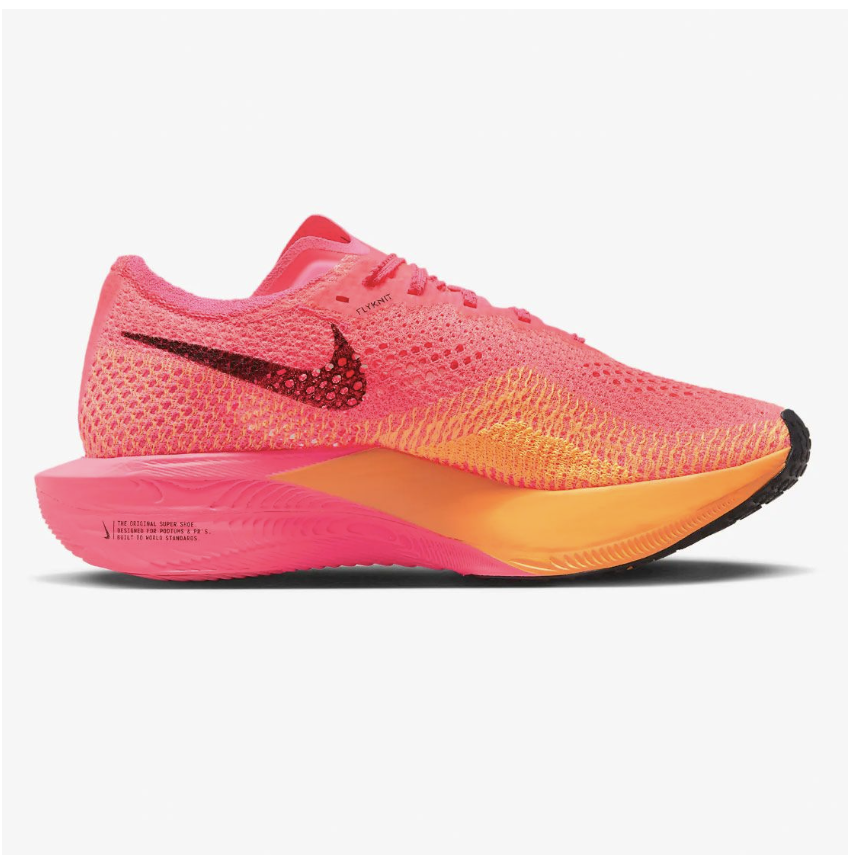On October 12, 2019, Eliud Kipchoge crossed the finish line of the Ineos 1:59 Marathon to uproarious applause. He had just become a legend, accomplishing a feat once deemed impossible: running a marathon in under two hours . Yet, while Kipchoge’s sub-two-hour time was regarded by many as a testament to the capabilities of the human body, his monumental run wasn’t actually confirmable. First, he used pacemakers to help maintain his speed throughout the course. Second, and perhaps more importantly, Kipchoge wasn’t just running to break a record – he was introducing the world to a new type of running technology: super shoes.
When Nike released their flagship Vaporflys in 2017, the same shoe Kipchoge wore on his historic run, it marked a game-changing breakthrough in running technology. The shoes sport lightweight foam stacks whose spring-like properties can propel runners forward more easily. The foam also stores energy that is lost when the foot hits the ground, pushing the runner back into the air and increasing energy efficiency. Bounciness alone, however, doesn’t provide a significant advantage. By itself, the thick foam would actually cause instability, making the foot unsteady and increasing injury risk. To give the shoes some structure, manufacturers add rigid components like carbon fiber plates or rods, giving runners a rigid surface to bounce off of.
In theory, these aspects of super shoe technology allow runners to travel with greater comfort, at higher speeds, and over longer distances – and the benefits seem to be paying off. Nike promises runners a 4% increase in performance over normal running shoes, and for Isaac Rabadi ‘27, a junior runner for Flintridge Prep’s cross country and track teams, the promises are a reality. “I started wearing my Vaporflys midway through the cross country season, and I saw a significant cut in my race times,” Isaac states. “[The shoes] are definitely lighter, they make your legs feel better [because] they don’t have to kick up as much weight. They’re really comfortable and fit well around the foot, which allowed me to catch up to some of the faster [people] on the team.” Isaac’s experiences reflect global trends as well, with world-class runners also experiencing similar breakthroughs in times. In the past years since super-shoes have been introduced, long-distance records have been shattered astonishingly quickly. During the recent Paris Olympics, both the men’s and women’s Olympic marathon records were broken for the first time in years with the aid of super shoes, even despite a hilly, difficult course.
The performance advantages found in super shoes have continued to be harnessed and improved throughout the years – with many more shoe companies joining the race to create the product. However, these innovations don’t come without a cost, with prices of shoes averaging around $250 – a price tag that fuels ongoing debates in the running world. Many critics argue that in amateur races, the high price tag of super shoes creates an inequitable playing field in many competitions – in which athletes with greater financial resources are given an advantage over competitors who lack the same means. Many critics fear that the shoes are somewhat dishonest, with some even going so far as to deem them “technology doping.” In fact, after Kipchoge had completed his historic marathon in the first version of Nike’s prototype Vaporflys, World Athletics, the governing body for many running events, banned athletes from wearing the version in January 2020, claiming that they were “distorting the record books.”
As the running world witnesses the effects of super shoes, the debate over their place in races intensifies. While the groundbreaking shoes undoubtedly push the boundaries of technology and raise human performance, they also raise questions about fairness, competition, and equality. Yet one thing remains clear: super shoes are yet another evolution of the sport and a testament to the ingenuity and tenacity that has propelled running forward.





